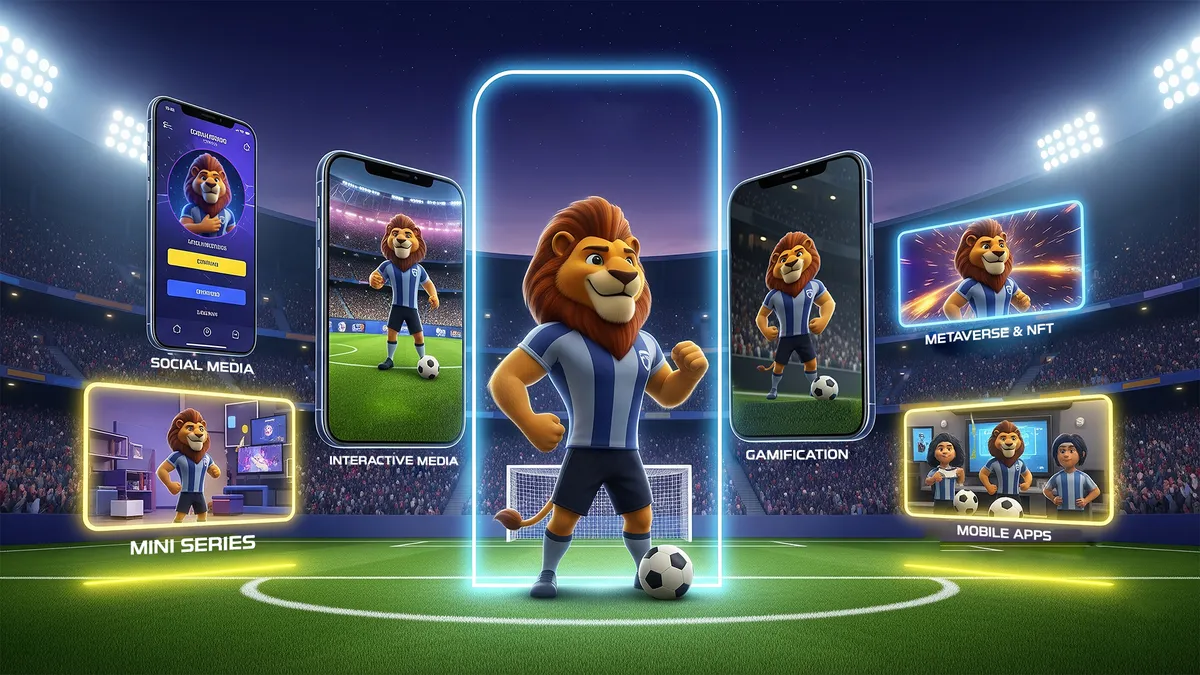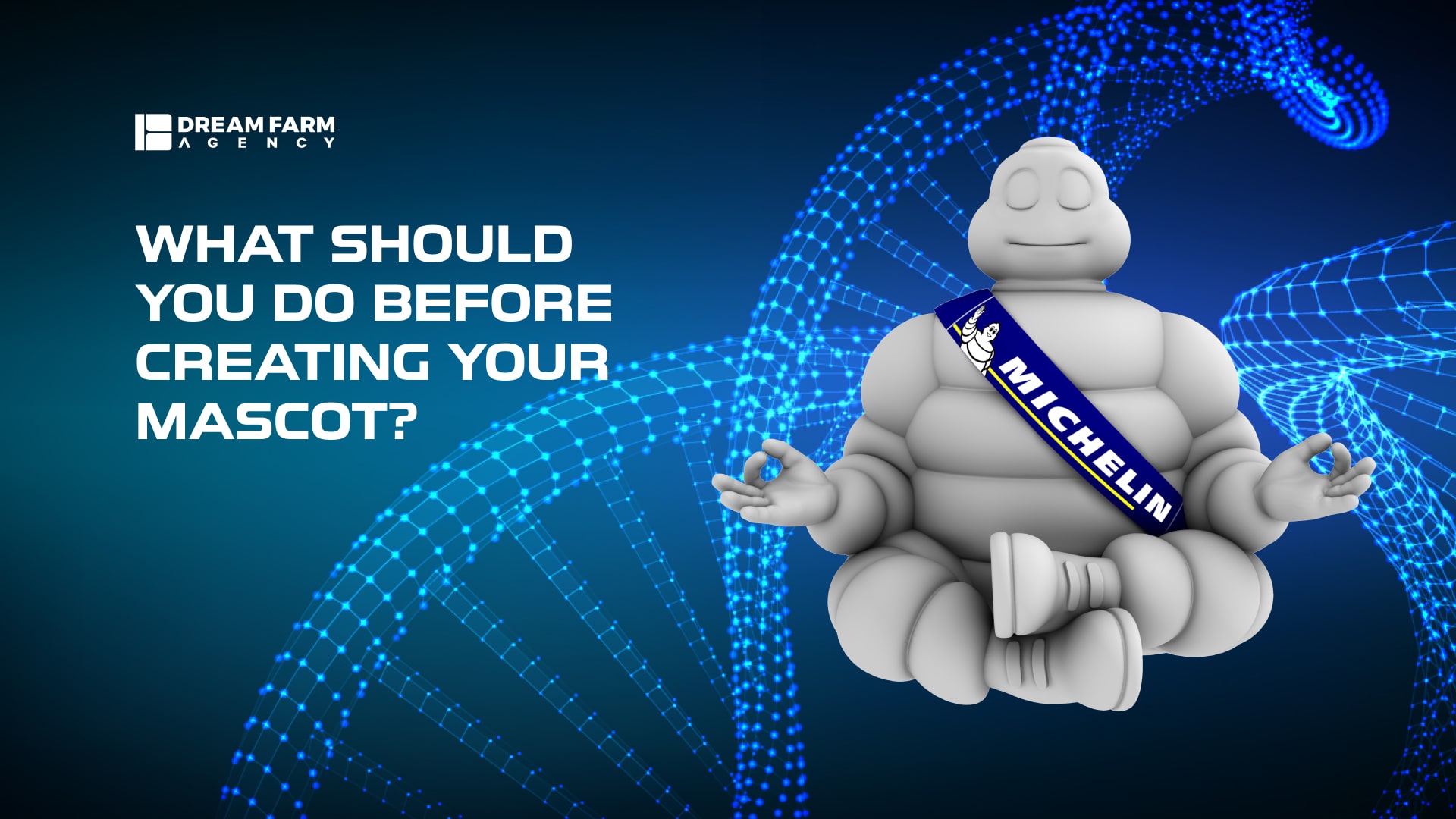
Before you take any other steps, it’s essential to have a foundational understanding of what brand mascots are and their strategic purpose
It is obvious that a well designed brand mascot will help you spread the word about your brand. But if you aim to have a brand mascot that ensures to convey your message, the design process is the last thing you should think about. There are critical steps to take for creating a character profile based on your brand identity. Whether you’re beginning from scratch or giving your current mascot a fresh look, this guide is here to give you useful tips for crafting an awesome mascot. So let’s take a closer look and learn how to create an impactful mascot.
Your Brand Identity, Your Brand Mascot
Your mascot should be a true reflection of what your brand stands for. An important way to make a deeper connection with the audience to promote your message, is to create the mascot based on your brand identity profile. To achieve this, consider these key points:
1. Brand Values
Did you know that the foundation of your mascot’s character is based on brand values? So as the first step, list your brand’s core values that define your brand. Here we have provided a real example to dive in:
Tony the Tiger (Kellogg’s Frosted Flakes)
Brand Identity: Kellogg’s Frosted Flakes is all about providing a tasty and fun breakfast
option for kids. It’s known for being energetic, youthful, and offering a great start to the day.
Mascot: Tony the Tiger is a vibrant, athletic tiger who embodies the energy and enthusiasm associated with Frosted Flakes. His catchphrase, “They’re Gr-r-reat!” perfectly matches the brand’s identity by promoting an exciting and delicious breakfast.
In this example, Tony the Tiger’s character aligns with the brand’s identity, reflecting the idea of a fun and energetic breakfast cereal for kids.
2. Target Audience
A mascot can effectively communicate with the target audience by employing visual appeal, storytelling, and results in higher levels of engagement. By defining your ideal customer, your brand mascot will go beyond being just a symbol; they become a relatable and interactive entity that directly speaks to the heart and minds of the people a brand is trying to reach.
Take Geico, for example. They chose the Geico Gecko as their mascot, a friendly figure that appeals to a broad audience seeking affordable car insurance. But they didn’t stop there. Geico also introduced the “Caveman” character to address the frustrations of a specific niche within their audience. By tailoring their mascot and approach, they connected with a diverse range of customers, boosting brand recognition and addressing unique customer needs. This showcases how a well-chosen mascot can bridge the gap between a brand and its audience, leading to business success.
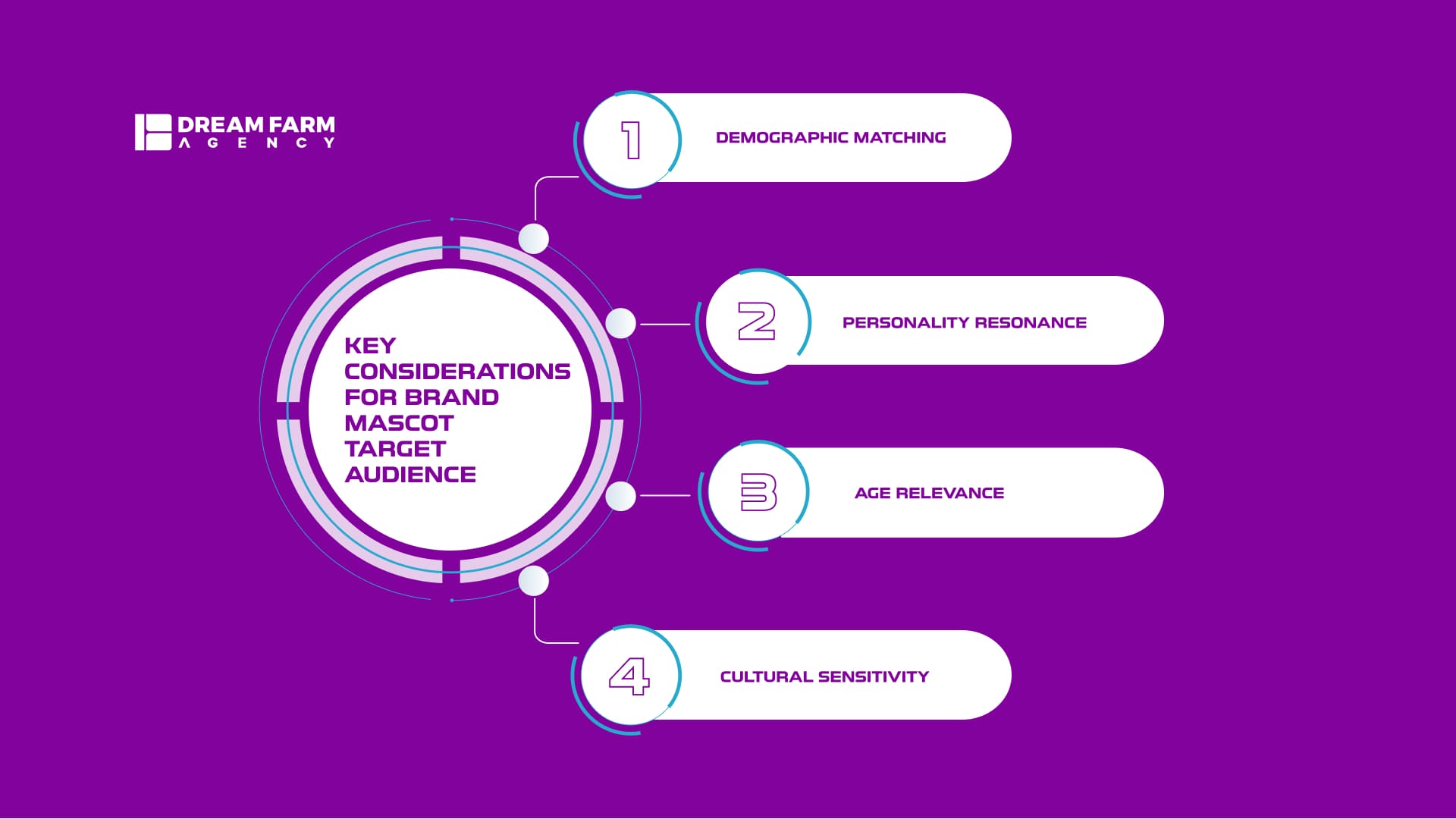
Here are some key factors that mascots connect with target audience:
- Demographic Matching: Demographic matching means tailoring your mascot to connect with your audience’s age, gender, location, and interests. When done right, it creates a relatable companion for your customers, building a memorable brand identity.
- Personality Resonance: Mascots can be like magnets, drawing in the audience by embodying traits that really connect. A friendly, approachable mascot can win over families, while one with a rebellious spirit might catch the eye of a younger, more adventurous crowd.
- Age Relevance: Consider the age of the people you’re aiming for. Mascots for kids are joyful and lively, while ones for young adults might have a more modern and dynamic vibe.
Cultural Sensitivity: It’s crucial to make mascots respectful of different cultures. This way, they can relate to diverse audiences without unintentionally causing any problems.
3. Brand Personality
The connection between brand personality and the mascot is all about making the brand relatable and appealing to the target audience. When customers see a mascot that reflects the brand’s desired personality traits, it resonates with them on a deeper emotional level, creating a stronger and lasting brand-consumer relationship. This alignment is key in building a brand that not only stands out but also connects with its audience in a meaningful way.
Clever Daycare in Calgary, Canada, wanted to expand. They knew parents wanted a top-notch, flexible, and fun daycare. At Dream Farm Agency we helped Clever become a trusted choice for parents. We designed a mascot that matched Clever’s creative, clever, energetic, modern, and happy personality.
This alignment made Clever Daycare not only a trusted choice for parents but also a fun place for kids. It helped Clever grow and succeed. Matching the mascot to the brand’s personality can work wonders.
What happens if the brand personality doesn’t match the brand mascot?
Mascot should be strategic to deliver the right message, and when it’s not synced with the brand personality would not be stable enough to act strategic.
Think of your brand like a person, and the mascot as their face. When they match, it’s like finding your true self. It’s not just about looking good; it’s about being real. That’s where trust, recognition, and emotional connections start.
In this part, we’ll talk about why it’s essential for your brand’s personality and mascot to be like two peas in a pod. It’s all about trust, people recognizing you, and building a connection. Plus, it makes your marketing way more exciting. Let’s dive in!
mismatching brand mascot with brand personality will end up to:
- Confusing Messages: When a brand’s personality doesn’t match its mascot, the messaging gets mixed up. This confuses the audience, making it hard for them to understand what the brand stands for. Inconsistent messages can erode trust and credibility.
- Weaker Emotional Connection: A well-fitting mascot should stir emotions in the audience. But if there’s a mismatch, the emotional connection weakens. Instead of bonding with consumers, the mascot might leave them indifferent or even put them off.
- Reputation Damage: In today’s world of instant communication, any inconsistency between brand personality and mascot can quickly become a problem. Customers and critics can point it out, harming the brand’s reputation and making it seem insincere.
- Missed Opportunities: When the brand personality and mascot don’t go together, the brand can miss out on market opportunities. A mascot that doesn’t connect with the target audience may struggle to attract new customers, leading to a drop in market share and revenue.
- Adaptation Matters: Remember, brand personalities can change over time. So, it’s crucial to check if the mascot still matches the brand’s current personality and values. Sometimes, rebranding or updating the mascot is necessary to keep things in harmony.
In summary, aligning the brand personality with the mascot is a key part of a successful branding strategy. When they match, it creates a strong bond with consumers, leading to brand loyalty and success. But when they don’t, it can lead to confusion, a weaker emotional connection, reputation issues, and missed market opportunities. It’s a reminder that in the branding world, authenticity and consistency are essential.
Here are six real examples of brand personalities and their mascots:
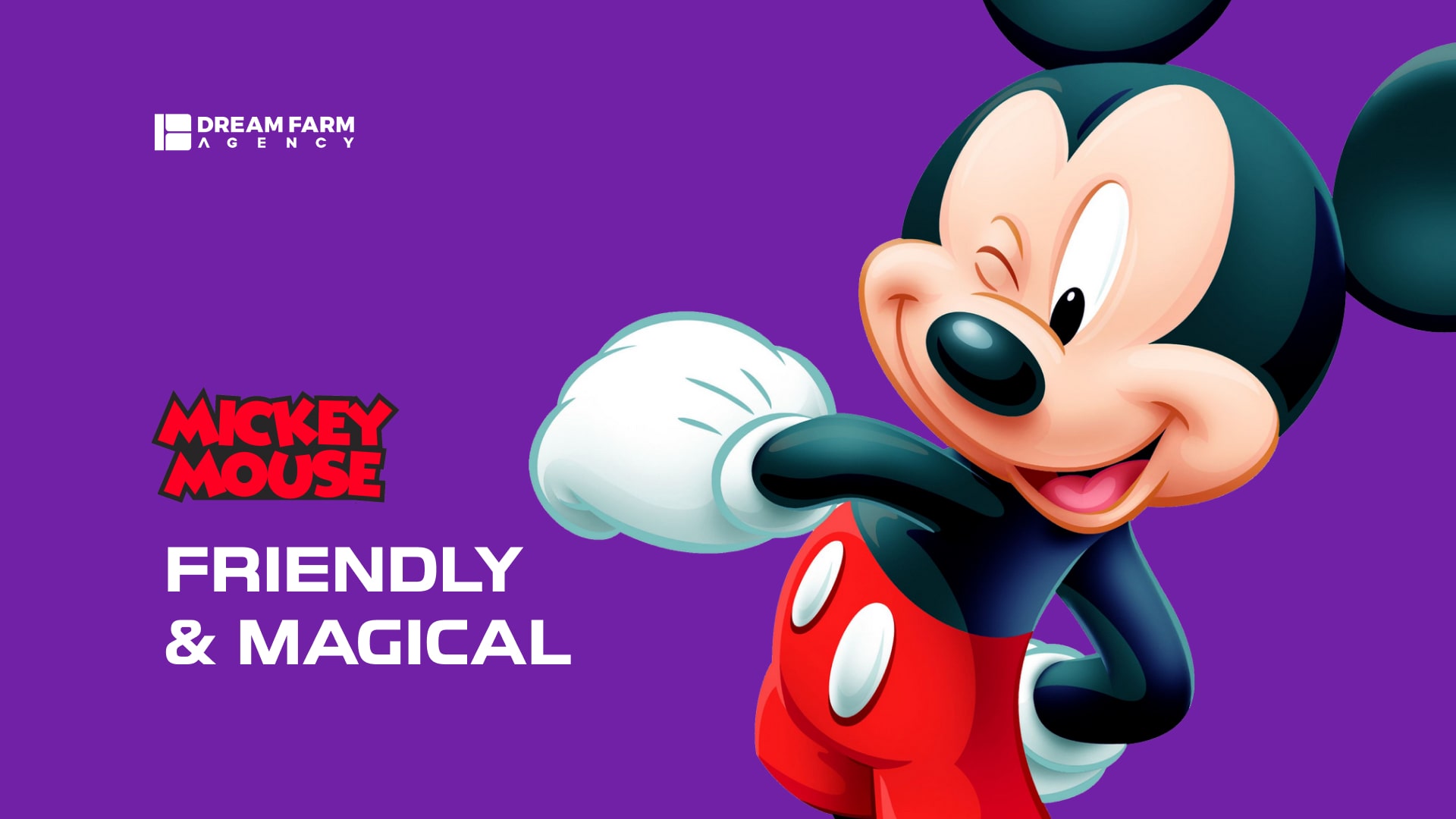
the iconic and beloved character that embodies fun, happiness, and enchantment. Disney’s brand personality is built on friendliness, imagination, and creating magical experiences for all ages.
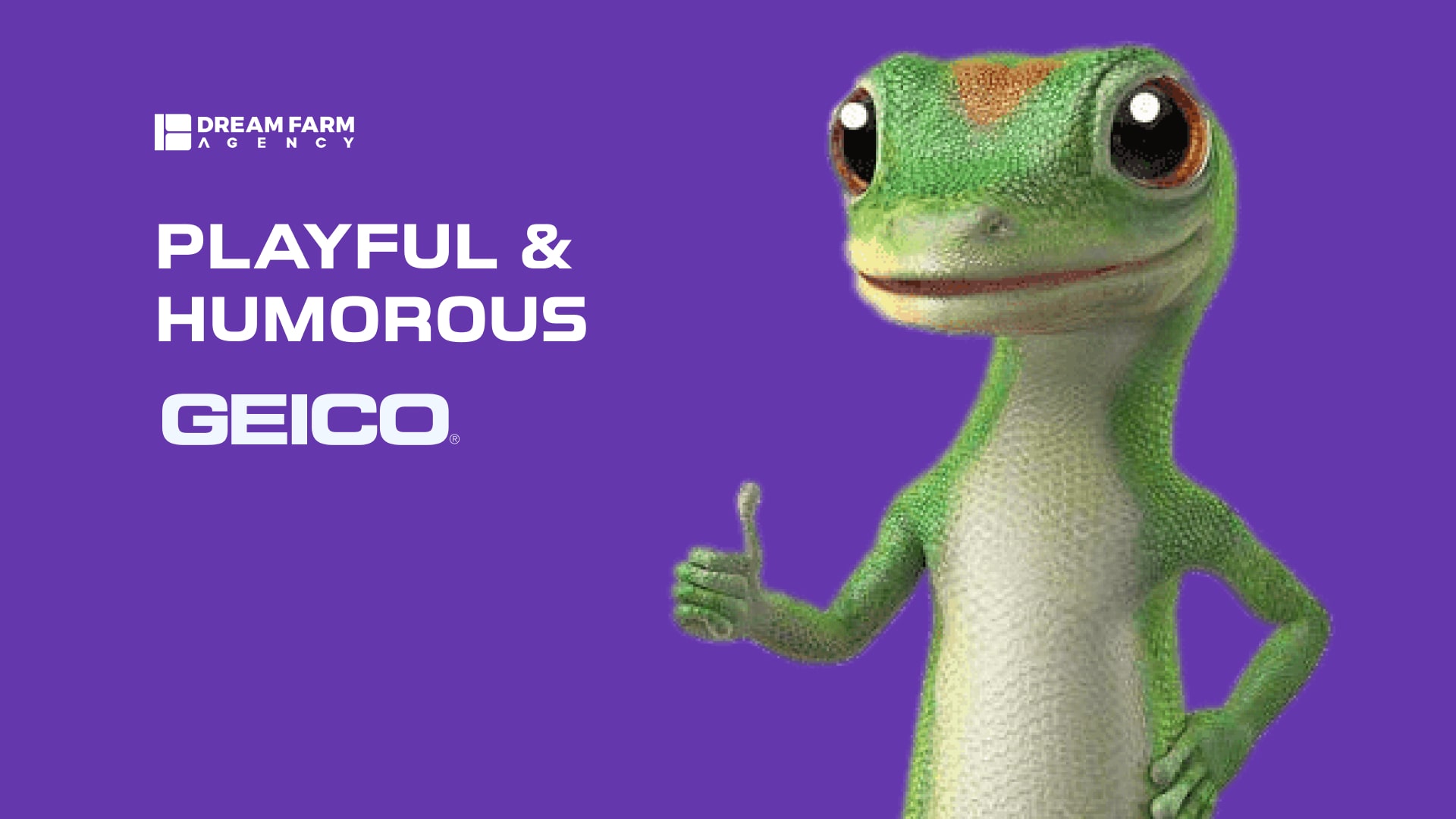
The Geico Gecko, a cheerful and humorous animated gecko. Geico’s brand personality is characterized by its lighthearted and entertaining approach to insurance advertising.

A friendly and rotund figure made of tires. Michelin’s brand personality conveys reliability, safety, and professionalism in the automotive industry.
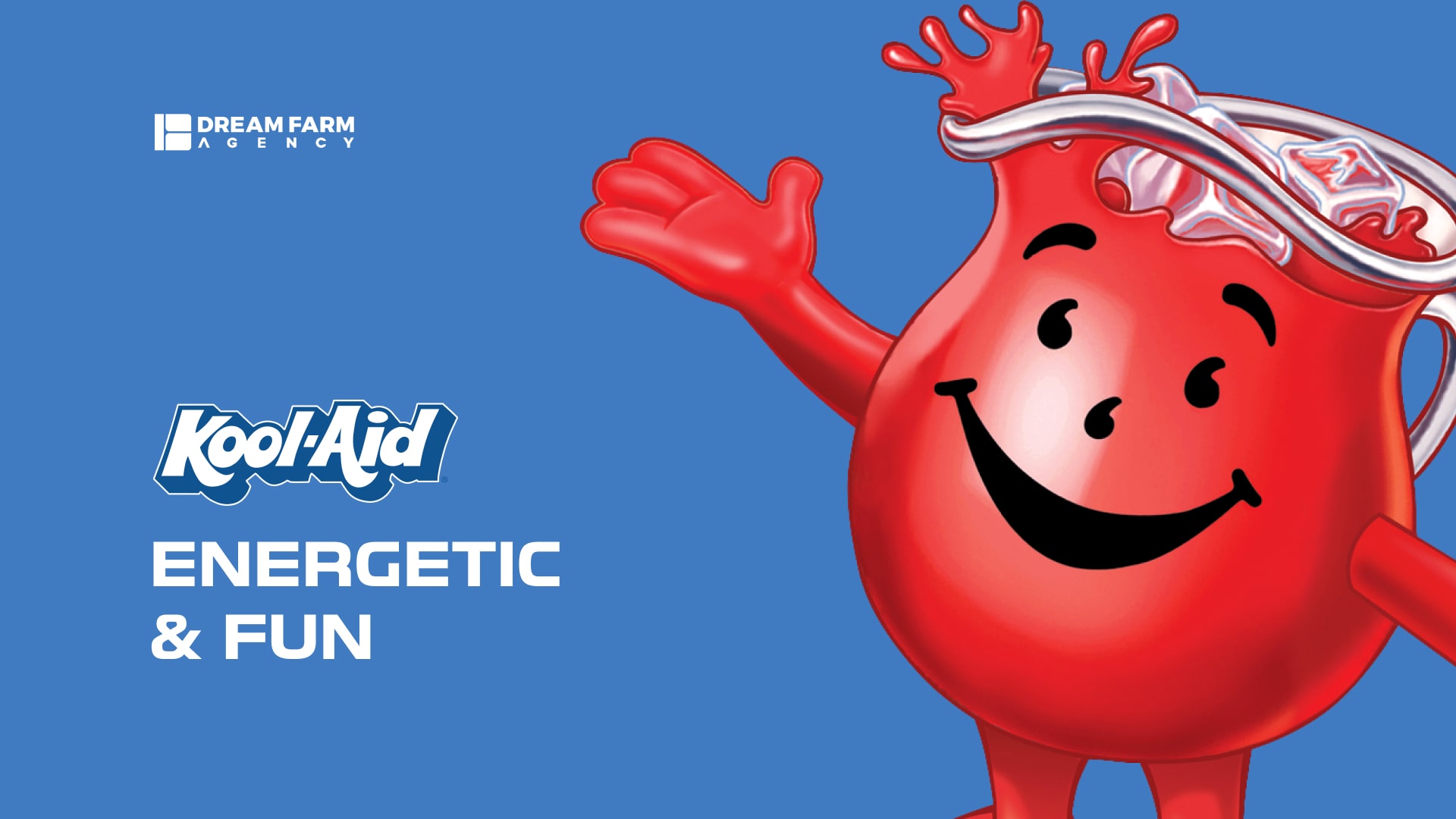
The Kool-Aid Man, a smiling pitcher bursting through walls with “Oh yeah!” Kool-Aid’s brand personality is all about youthful energy, fun, and excitement, especially for kids.
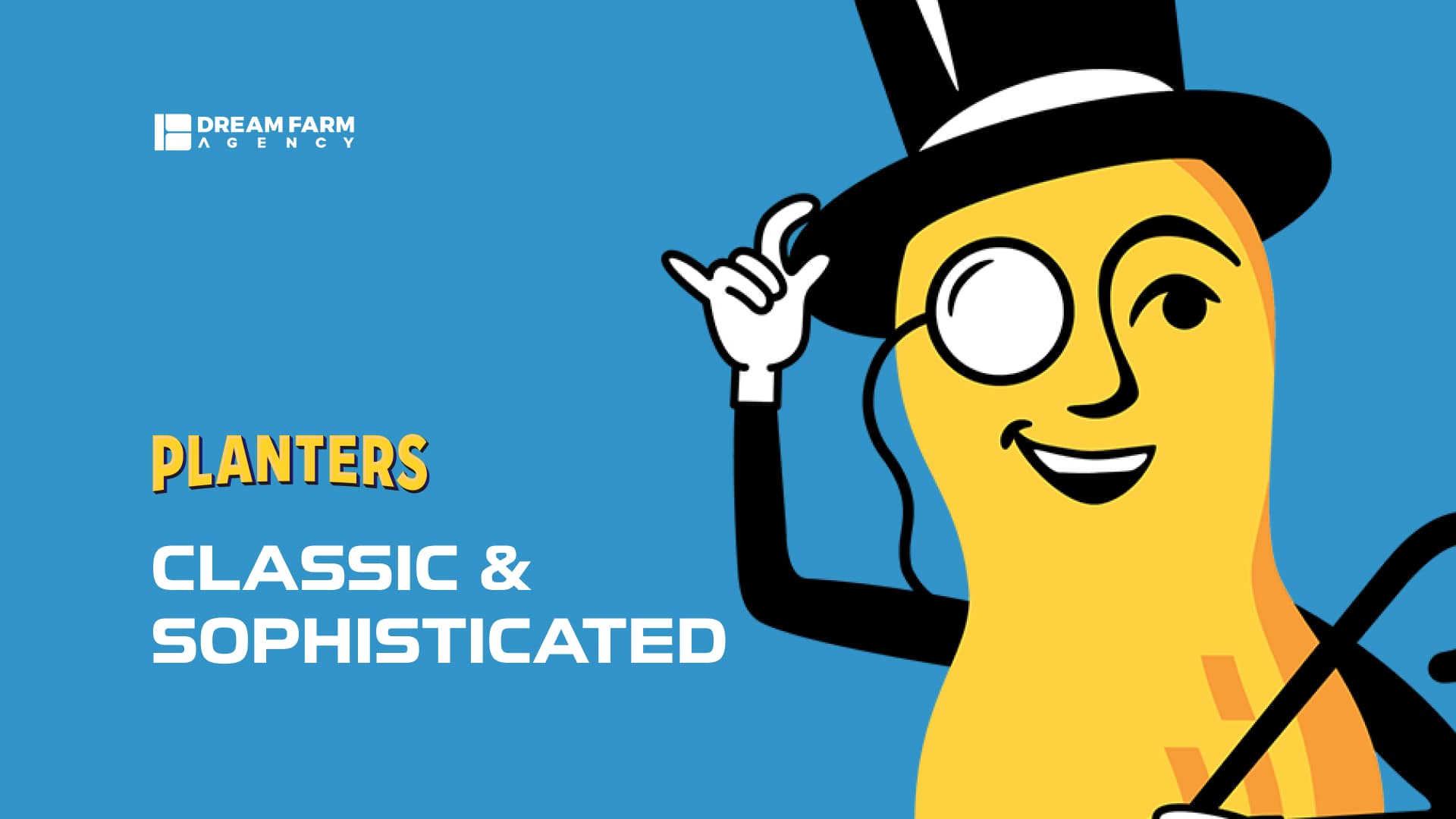
Mr. Peanut, a refined, monocle-wearing peanut. Planters’ brand personality is built on classic elegance and sophistication, reflecting its premium nuts and snacks.
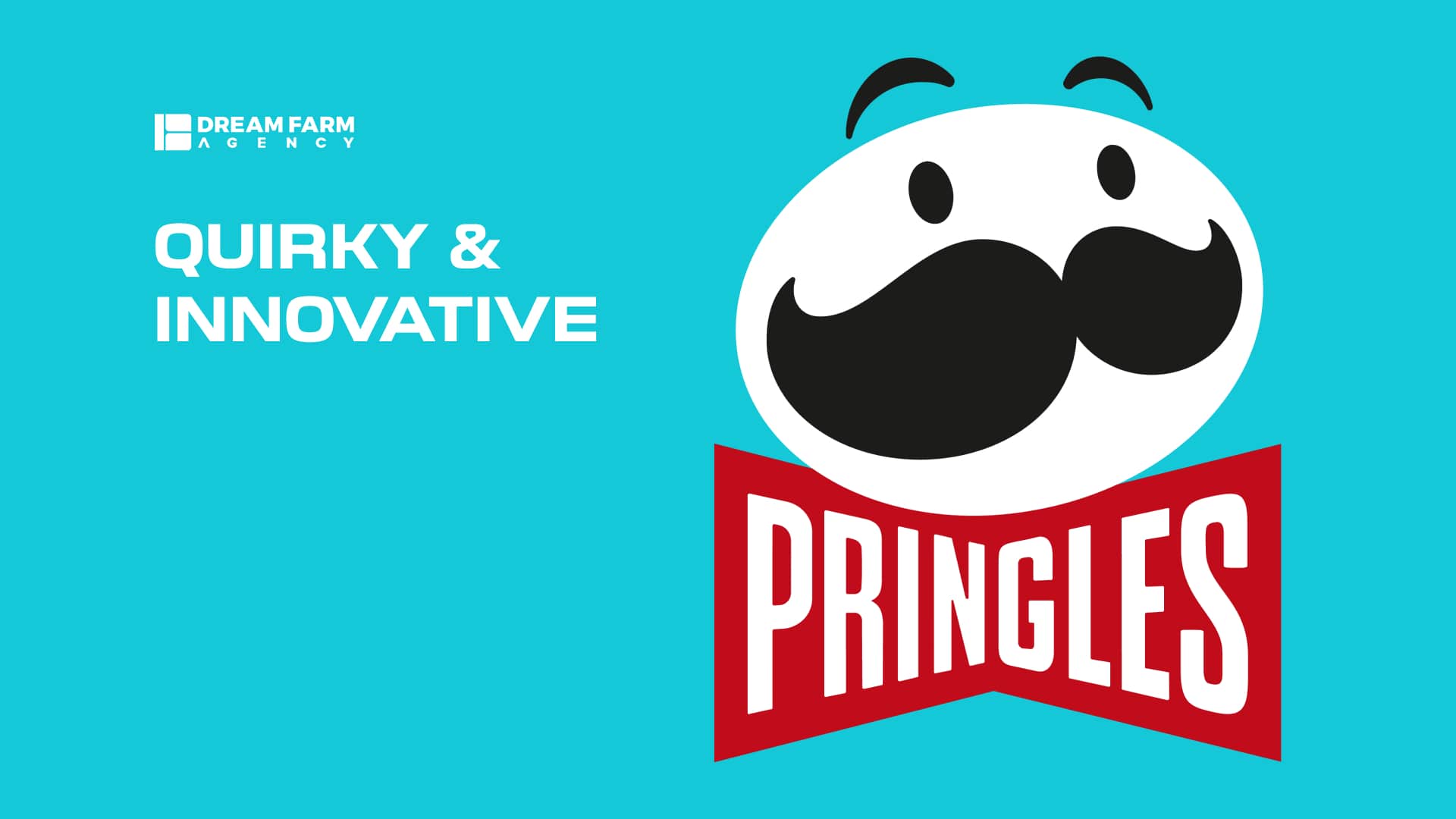
The Pringles Can, with its distinctive cylindrical shape. Pringles’ brand personality is known for its quirky and innovative approach to potato chips, offering unique flavors and packaging.
These examples illustrate how brand personalities and mascots work in harmony to convey specific qualities and values to consumers, helping create a strong and memorable brand image.
If you’re thinking about adding a mascot to your communication plan, our team is here to help.
With over 10 years of experience and the development of more than 2,500 characters, we’ll guide you through every step to unlock the full potential of your new team member!
Learn more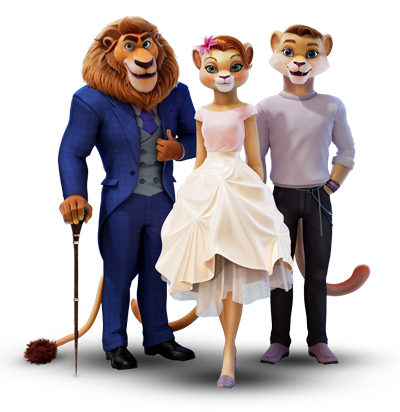
Creating a Character Profile
The next step after pinpointing the brand’s identity, is to develop a character profile for your mascot. This character profile serves as a blueprint, outlining the personality traits, appearance, and characteristics your mascot should embody. It’s the bridge that connects your brand’s essence with the visual representation that will resonate with your audience. Think of it as the DNA of your mascot, defining how it should interact with your customers and what emotions it should evoke. This is exactly what dream farm agency has in mind for creating a successful brand mascot for its clients.
These 5 steps are important for making a character profile:
1. Define the Mascot’s Story
Story is a magic that adds unique depth and reality to your brand’s mascot. Defining the mascot’s story can create a strong emotional connection with your customers, making the mascot more than just a symbol – it becomes a character that roots for the brand’s narrative.
Every character has a story, and your mascot should be no exception. Develop a backstory for your mascot that aligns with your brand’s narrative.
Let’s Watch this video:
Mr. Clean is famous for effortlessly handling even the toughest messes, all thanks to his reliable magic eraser and potent cleaning solutions.
2. Character Traits
Character traits are the personality of a brand mascot. They show what the mascot is like and how it acts. So, choosing the right character traits is important to make the mascot a good fit for the brand’s message and the people who like it.
Let’s Watch this video:
Geico’s Gecko is a famous mascot known for being approachable, humorous, and lighthearted. These character traits reflect Geico’s brand message of making insurance less complicated and more enjoyable. The Gecko’s personality helps people feel at ease when dealing with insurance, and his humorous approach makes the subject more relatable and less intimidating.
3. Visual Aesthetics
Visual aesthetics, in simpler terms, refer to how something looks, especially when it’s about making it appear attractive or appealing to the eyes. It’s all about the way things are designed, including colors, shapes, and overall appearance, to create a certain impression or feeling. In the context of branding and mascots, visual aesthetic means making the mascot look good and visually pleasing to make a strong impression. While the design comes later, it’s helpful to have a rough idea of how your mascot might look. What are the visual elements that will make it instantly recognizable and relatable?
Let’s consider the visual aesthetics of M&M’s brand mascot:
The M&M’s mascots, such as the red and yellow candy-coated characters, are designed with vibrant, eye-catching colors and a friendly, approachable appearance. Their smooth, glossy exterior and bright, contrasting candy shell colors make them visually appealing, evoking a sense of fun and playfulness. The simplicity and consistency in their design, along with their distinct personalities, make them instantly recognizable and memorable. The visual aesthetics don’t just improve the brand’s appearance; they also add to the mascots’ overall attractiveness and appeal.
4. Role and Purpose
Defining the purpose of your brand mascot within your marketing strategies which involves careful planning and alignment with your brand’s goals. Determining the role for your mascot will play in your branding efforts. Is it going to be a spokesperson, an entertainer, or something else? Define its purpose clearly.
here’s a list of different roles of mascots in marketing:
- Brand Spokesperson
- Engagement Tool
- Educator
- Character Development
- Recognition and Differentiation
- Audience Connection
- Influencer
- Cultural Ambassador
5. Emotional Impact
Mascots have the ability to elicit specific emotions from consumers, which in turn can greatly influence their perception of a brand.
How do you want your audience to feel when they see your mascot? Ensure that the emotional response aligns with your brand’s goals.
Here’s a List of the emotional impacts of brand mascots:
- Joy: Mickey Mouse from Disney brings happiness to audiences of all ages.
- Nostalgia: Tony the Tiger from Kellogg’s Frosted Flakes evokes fond childhood memories.
- Trust: The Geico Gecko instills trust with its friendly and approachable persona.
- Comfort: Brawny Man, the mascot for Brawny paper towels, offers a sense of reliability and comfort.
- Excitement: Ronald McDonald generates excitement, especially among younger audiences visiting McDonald’s.
- Empathy: Amazon’s Alexa, while not a traditional mascot, shows empathy by assisting users with their needs.
- Connection: Mr. Clean creates a personal connection with consumers, fostering brand loyalty.
- Fun: The Aflac Duck adds an element of fun to insurance advertising.
- Inspiration: The Red Bull Stratos Team embodies inspiration by breaking records and pushing the limits in extreme sports.
These mascots each serve a unique emotional role in their brand strategies.
For a related read, check out: The Power of Emotion in Brand Mascot
Last word:
Understanding your brand’s identity and creating a detailed character profile are fundamental to designing your mascot. These early steps are crucial for developing a mascot that truly represents your brand and resonates with your target audience.
Remember, a mascot isn’t just a cute or quirky character; it’s the living embodiment of your brand’s essence. With this understanding, you’ll be well-prepared to move forward and bring your mascot to life. For a comprehensive guide on creating your brand character, explore our Mascot Total Solution which has elaborated on all the steps we will work on for creating a successful brand mascot. This knowledge will equip you for the next stages in mascot design and development. Stay tuned for more insights in our future articles!

Rojan


